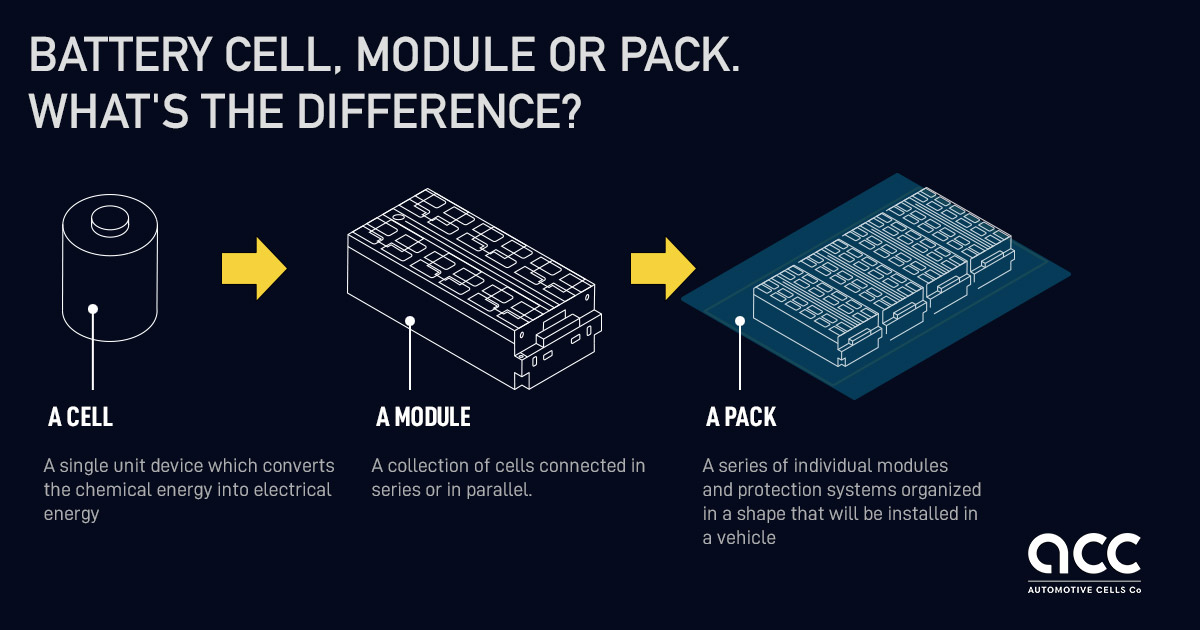Battery Cell, Module or Pack. What's the difference? [Infographics]

The manufacturing of battery cells compared to battery packs or modules are two very different industrial processes. Battery cell production is primarily a chemical process, while module and pack production is a mechanical assembly process.
Batteries are sometimes called Cells, Modules or Packs. But what does that mean? What is the difference?
Battery cells are containers that chemically store energy. They come in many shapes and forms but the three most common ones are prismatic, pouch and cylindrical.
The battery cells are arranged in modules to achieve serviceable units. The cells are connected in series and in parallel, into battery packs, to achieve the desired voltage and energy capacity. An electric car for example requires 400-800 volts and one single battery cell typically features 3-4 volts.
Finally, the battery pack is the complete enclosure that delivers power to the electric vehicle. The pack usually contains battery cells and/or modules, software (BMS - battery management system) and often a cooling and heating system, depending on where and how the battery pack is to be used.
But, hold on, soon, you won't even need to know!… Cells will be directly integrated into the full battery pack, without dividing it up into individual modules (Cell to Pack) or directly integrated into the vehicle frame (Cell to chassis).